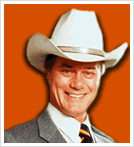Paul Giger’s ECM debut “Chartres”, recorded in 1988, signalled the arrival of a uniquely- gifted violinist with an uncommon sensitivity to sound-in-space, as well as to the musical material. When the Swiss violinist plays ‘the room’ is invited to be an active participant in the process. True of Giger’s outstanding solo albums (“Chartres”, “Schattenwelt”) it is true too of this duo with harpsichordist Marie-Louise Dähler recorded at the mountain monastery of St Gerold in Austria.
As in his previous recordings, this sixth album, recorded at Sankt Gerold Provostry in Austria, is made up of Giger's own compositions and improvisations. But this time there is an admixture of music by Johann Sebastian Bach: the famous 'Aria' that serves as the starting point of the Goldberg Variations, and the four- movement Sonata in F-minor for violin and obligato harpsichord (BWV 1018).Despite years of cultivating his own music, Giger, who was formerly the leader of the St. Gallen Symphony Orchestra, has not neglected the violin repertoire, as is evident in his lean and agile playing of Bach. Marie-Louise Dähler, a much sought-after soloist and chamber musician and a passionate continuo player who began taking harpsichord lessons from her father as a very young child, is perfectly at home with Bach. Being a thorough bass specialist, she also has a natural penchant for improvisation - a talent that has proved highly productive in her collaboration with Giger. She has expanded this talent into free improvisation, which has in turn left a mark on the compositions. In Towards Silence these two musicians approach each other from different angles, giving rise to a playful and ever-surprising interaction between allegedly opposite styles and sound-worlds.
Since they joined forces to form a duo seven years ago, Giger and Dähler have never ceased to study Bach’s sonatas and frequently include them on their programs. This is fully in keeping with their musical philosophy. 'In a recital one usually knows exactly where to interpolate a movement', Giger explains, 'but on a recording the problem is more complex. In the end we found a solution that practically inverts the sequence of movements in the Bach sonata but allows us to create highly contrasting transitions between our music and Bach.' The album opens with a sharp contrast between an extended free improvisation, recorded in a single take, and Bach's 'Aria'. In contrast, the Vivace from the Bach sonata is followed by Postlude like an angular shadow (track 5), while Prelude blends almost imperceptibly into Bach's Adagio.
Thanks to a wealth of unconventional playing techniques, the two musicians coax a great many unusual sounds from their instruments. In Cemb a quattro the harpsichord is prepared in such a way that each register has a different reservoir of sounds. This has an immediate impact not only on the melody and harmony but on the rhythmic processes as well.
While Marie-Louise Dähler presses the keys, Giger strikes the strings with dulcimer mallets inside the instrument. Another source of unusual timbres is the 'violino d'amore' - Giger's first violin, inherited from his grandfather and rebuilt by Christopher Lee Lüthi so as to combine five specially tuned strings (d-a-d'-a'-d') with six sympathetic strings. Owing to the relations between the upper partials, the notes in certain scales produce distinctive sympathetic vibrations that seem to envelop the instrument in a gentle haze of sound. When plucked, as in Dorian Horizon, the sympathetic strings produce a sound that intermingles mysteriously with that of the harpsichord.
No matter how free and associational these pieces may sound, almost every one is based on a structural idea. In the case of Halfwhole it is the harmonic and melodic potential of a scale consisting of alternating half- and whole-steps. Dorian Horizon, as the title suggests, exploits the horizontal, i.e. melodic aspects of the Dorian mode. And Gliss a uno inscribes an extremely slow descending glissando played on a single string with a constant bowed tremolo. Bombay II is a duo version, newly elaborated in conjunction with Marie-Louise Dähler, of a solo piece that Giger composed in 1970 toward the end of his first trip to India. The solo version can be heard on the CD Schattenwelt.

1. From Silence to Silence
2. Aria from Goldberg Variations (BWV 988)
3. Cemb a quattro
4. Halfwhole
5. Vivace from Sonata V in F Minor for violin & harpsichord (BWV 1018)
6. Dorian Horizon
7. Allegro from Sonata V (BWV 1018)
8. Vertical
9. Gliss a uno
10. Præludium - Adagio from Sonata V (BWV 1018)
11. Bells
12. Bombay II
13. First movement of Sonata V (BWV 1018)
Paul Giger: violin, violino d'amore
Marie-Louise Dähler: harpsichord
All Compositions by Giger/Dähler except 2, 5, 7, 10, 13, by JS Bach
Released by ECM in 2007
link@320























